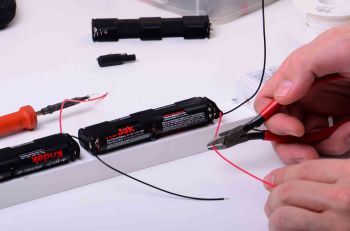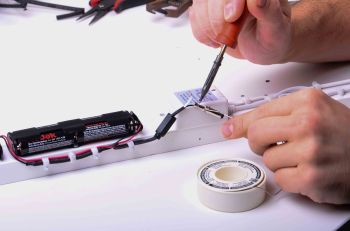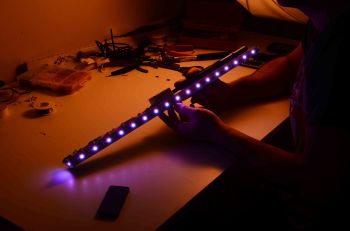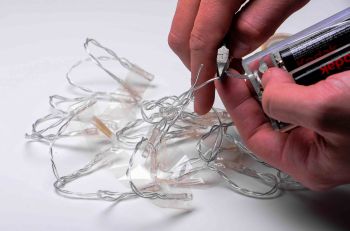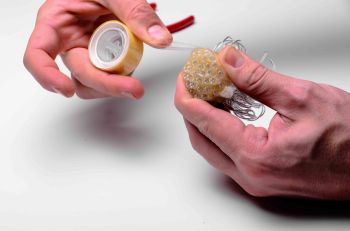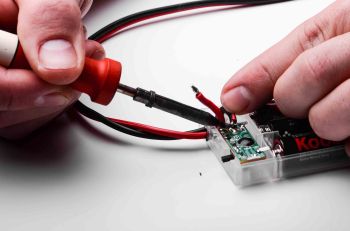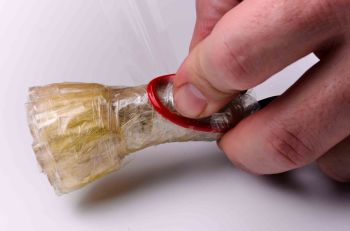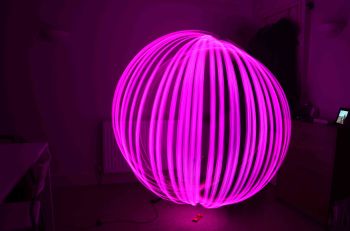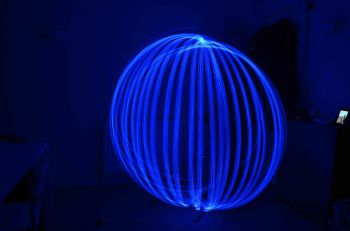After a couple of days of inactivity I am glad to be back again, and this time I bring with me more light painting DIY stuff. The main reason I haven’t posted is precisely that what I am sharing next has kept me busy . If you fancied what you saw in my previous “how-to” style post, which described how to build jigs for creating amazing Light Orbs, you are going to love this one too (or at least that is my intention).
In this occasion I am going to guide you through building Colour changing LED Light Rails.
… but what exactly is that??
To put you into context, this new toy is built of RGB LED strips, that come off the shelf in reels of different lengths. The strips are cuttable every 3 LEDS along the cutting marks, without damaging other parts. The LED size is 5mm x 5mm, being they separated about 3.5cm from one another (if you do the maths, those 5 meters contain 150 LEDs). As you will see in a minute, you can easily find on eBay a bundle that includes the reel, a 44 key remote controller, its IR receiver and a 12V transformer to power everything up for no more than a few quids.
The LED strips look as follows:
As the name already suggests, the LEDs are RGB, which stands for Red, Green and Blue that are the additive primary colours. This means that every individual LED is actually composed by 3 LEDs, one of each primary colours. Combining light of these colours in the right proportion (of intensity) any colour’s spectrum can be synthesised (even black which is the absence of light, although it is not too useful for our purpose, hehe).
We are going to cut and stick a custom length segment of this RGB LED strip onto a wooden stick, task that do not require any glue since the back side of the reel is self-adhesive.
What can I use it for??
Once we have the wooden beam with the LEDs on it, we need to power it up, switch it on and move it around in the dark while your camera’s shutter is open. The effects accomplished with the Light Rail are astonishing. By means of the remote, you can choose from a good range of colour sequences and speeds, adjust the brightness of the LEDs, make the LEDs to light in one single colour, etc. Combining all this and in a creative way will help you taking amazing light painting shots.
Is it too difficult to build??
I must say that the process is slightly more complex than the Light Orbs LED “bulbs” of the previous post, but nevertheless it is something almost anyone a bit dexterous can do. A bigger set of tools are required too, but nothing uncommon though. You will spend (or invest!) more time hands-on it, but the results well worth every part of it.
- Difficulty: 8 out of 10
- Time: 3 hours
- Cost of the materials: £30 – £35.
Materials needed
- 5 meters of RGB LED Strip Light (SMD 5050 self-adhesive back) + Power Supply Adapter + 44Key IR Remote Controler
- 1 x Battery holder for 8 AA batteries.
- 1 x PP3 clip
- 1 x 2.5mm DC plug
- 1 x panel switch (optional)
- 1 x wooden strip of about the next dimensions: 2cm x 3cm x 75cm
- 1 x bag of Round white 4mm cable clips (you can buy them in any hardware store, they are commonly used to guide telephone cable through the walls)
- Sellotape
- Some AWG 22 multistrand wire
- Soldering Iron
- Heatshrink tube or insulation tape.
- Solder
- 4 screws
Let’s get hands on it
STEP 1: Remove the adhesive protector sticker off the back of the strip. Place the pre-soldered connector in one end of the wooden beam and start sticking it towards the other end, as straight as you can.
I have chosen a wooden stick of 75cm x 2cm x 4cm. To be honest I planned to get it from a specialised shop but luckily enough, on Friday night I found kind of a table structure that was thrown away by one of my neighbours. It could have not been more convenient as it ended up being ideal for the job.
If you are not that lucky, you can always go to the shop and buy for a couple of pounds a stick of whatever length suits you best, but keep in mind that the longer the stick, the less portable it becomes and hence you eventually will get lazy to take it with you. On the other hand, long rails allow you to achieve certain effects that are simply not possible to get when you use a shorter version. Find the equilibrium point between length and practicality.
STEP 2: Once you have stuck the LEDs , cut the strip with scissors along the cutting mark closest to the edge.
This is what you should have by now!
STEP 3: Locate the IR controller box approximately in the middle of the stick and hold it in position with two screws like so:
STEP 4: From the IR Controller Box, two cables come out, one for the IR receiver and the other for interfacing the LEDs via a 4 way connector. Connect the connector of the LED strip to the IR Controller connector. These two cables are oversized in length but you do not want to cut them. Instead tidy up the excess of cable using the 4mm cable clips as convenient:
STEP 5: Fix the battery holders in position with some screws:
STEP 6: Attach the PP3 clips to the battery holders as shown next:
STEP 7: It is time to do carry out the electrical part of the job. As previously commented, you need to bear in mind that the light rails work with 12V, therefore if you use AA batteries, you need to connect 8 batteries in series.
If you have bought battery holders for 8 AA batteries you will just need to use one PP3 clip whose cables will go straight to the DC power connector in the right polarity. No further connections are required.
However did not use eBay for this and all I could find in Maplin were battery holders for 4 batteries and so 2 I bought. In my case, I needed to connect them together in series as the next schematics shows:
And here you can find some pictures of how I physically made the connections:
To tidy up all the wiring I used again some 4mm cable clips and heatshrink tube that I contracted by puting the tip of the soldering iron close enough for a while (you can also use a hair drier if you have one available). If you do not have heatshrink tube you can use insulation tape instead or simply leave the cables unprotected, but I do not recommend that. Things properly done last longer so I suggest you are patient and go through all the steps .
STEP 8: Plug the connector into the IR Controller Box socket and there you have your light rail ready to rock!
STEP 9: Switch off the lights of the room you are in at the moment, use the remote to power on the LEDs and play around with the different buttons to get an idea of the purpose of each one and of the posibilities the power rail can give you:
The final result!
Well, if this has not been enough for encouraging you to build your own, let’s try luck with a short
<WATCH VIDEO>
Some quick test shots
Pending of going out to properly inaugurate them (yes, I built 2 of them), I publish here some test shots for you to have a rough idea of what you could achieve!
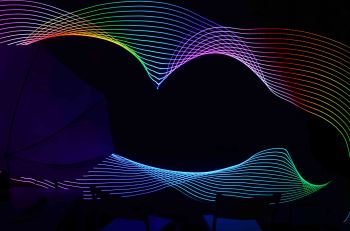
If you liked this post, I invite you to click LIKE and/or suscribe to my blog for being aware of all the updates!
Thank you very much for reading!

















